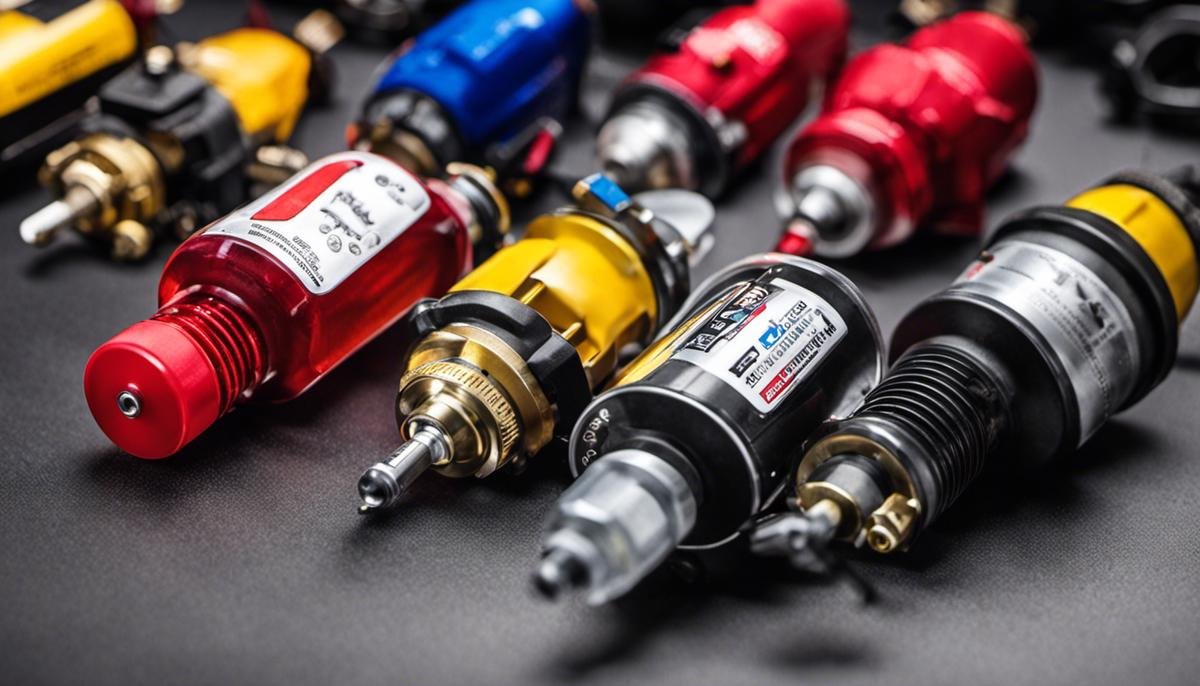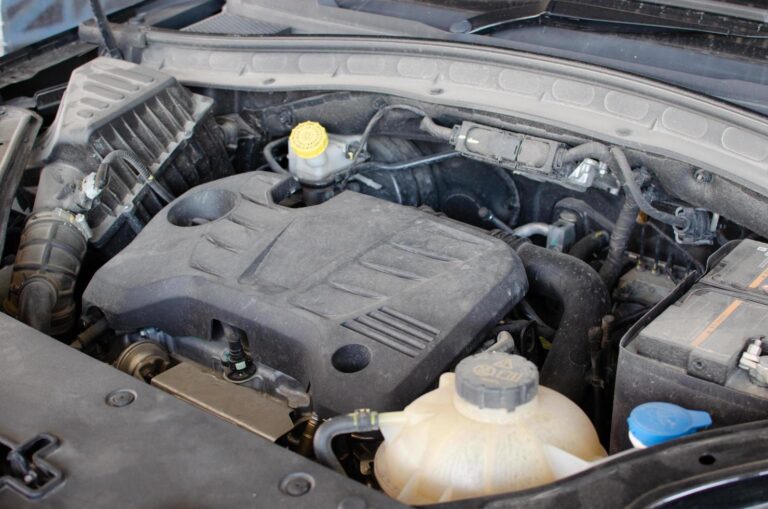Motorcycle Brake Bleeders: A Hobbyist’s Guide

Navigating the terrain of motorcycle maintenance can sometimes be a winding road, fraught with technical jargon and complex mechanics. Despite this, understanding key elements such as the brake bleeder, an integral component of your motorcycle, is highly crucial. Serving not only as the lifeblood of your bike’s braking system, these easy-to-neglect gizmos remarkably influence your riding experience. This voyage is set to demystify these unassuming devices, help you choose the perfect fit for your bike, and provide insights on maintenance, troubleshooting, and a practical guide on installation and replacement. Let’s gear up, rev the engines and embark on this enlightening journey into the core of motorcycle brake bleeders.
In this article
Understanding Motorcycle Brake Bleeders
Discovering The Magic Of A Motorcycle Brake Bleeder!
For all motorcycle enthusiasts, getting hands dirty in the workshop isn’t just an avenue to make sure our two-wheeled pals are running in good form; it’s part of our identity. Tinkering around, finding quick fixes and mastering the mechanics becomes as instinctual as breathing. As we tread this path of passion, we realize that some tools, sometimes overlooked, really do make a difference. One such unsung hero inside the toolbox is the motorcycle brake bleeder.
On a surface level, the brake bleeder is a straightforward bit of kit, but when we delve deeper, we appreciate its function isn’t quite as simplistic as it initially seems. Its primary job? To purge air from the brake system. Why do we need this? Have you ever felt that squishy sensation when you squeeze on your brakes? That’s most likely air bubbles trapped in your brake system. A hard brake lever means a ride consumed with confidence while a squishy lever leaves us all wobbly. So here we are, introducing the life-saving brake bleeder!
When we press the brake lever, the brake fluid moves from the master cylinder to the brake caliper via brake lines. If there’s unwanted air inside these lines, it compresses under pressure, causing that vexing squishy sensation. So how does the bleeder come into the picture? When used correctly, a brake bleeder forces the air out of the brake system and does the oh-so-important job of maintaining hydraulic integrity.
Inside the capitally important brake caliper is a small bleed screw or a bleed valve. This is where our brake bleeder attaches, and its function comes alive! This operation might sound like a hiccup on your hobby journey, but rest assured that it’s far from it. The steps involved in using a brake bleeder are simple, clear-cut, and easy to master. Ultimately, anyone embracing the motorcycle lifestyle can perfect this skill with patience and practice.
A brake bleeder uses pressure to force the brake fluid, pushing out any tiny trapped air bubbles and creating a solid brake feel. It’s astonishingly satisfying to see those air bubbles rise and pop, knowing that each bubble equates to a safer and smoother ride.
To realise the full potential of a brake bleeder, one needs to understand that bleeding the brakes isn’t just a one-time job. It’s a periodic exercise that ensures the optimum functioning of the brake system, reinforcing rider safety. Given the evolution in the motorcycle landscape, new-age bleeders accommodate a wide spectrum of models. They exhibit a universal nature, catering to the diverse brake systems often found on motorcycles across the British landscape.
So, the takeaway? Understanding the function of a motorcycle brake bleeder provides the power to eradicate that dreaded spongy brake lever. The passport to safer and more confident riding lies in this seemingly inconspicuous tool called the brake bleeder. Get the knack of using the brake bleeder, and share the joy of a firmer ride. It’s time to embrace this quiet game-changer and take the motorcycle hobby up a notch!

Choosing the Perfect Brake Bleeder
Selecting the Perfect Motorcycle Brake Bleeder: Your Comprehensive Guideline
When it comes to nurturing that godsend of a machine called a motorcycle, maintaining the brake system is undoubtedly an area of vital importance. Having got the ins and outs of how a brake bleeder operates and the marvelous benefits it offers, it’s high time we ventured into the nitty-gritty of selecting the right brake bleeder for your beloved motorbike. So, let’s delve straight in!
First off, the market is peppered with a wide array of brake bleeders. Each promises superior performance and efficiency, making the task of zeroing in on one feel comparable to finding a needle in a haystack. Nevertheless, by keeping a keen eye on essential features and specifications, finding that perfect match becomes less daunting.
Arguably, the most critical factor to consider is compatibility. Whilst the universality of modern brake bleeders bolsters a sense of ease, it’s worth noting every motorbike model needs a specific brake bleeder. Before dashing to your favorite retailer, make sure to check the make and model of your vehicle to ensure the brake bleeder is a perfect fit.
Next up – durability. Here, take into consideration the construction and material of the brake bleeder. Doing so guarantees that the tool offers you good service for a decent period. Resilience to rust, sturdiness, and robustness should be top of your checklist. Indeed, there’s no merit in settling for a fragile gadget that will break down before your next MOT.
Then, we have performance. This primarily dwells on the efficiency of the brake bleeder. Check that the unit has a firm seal to avoid air getting sucked into the system during the bleeding process. The quicker the bleeding process, the better. Thus, a brake bleeder brand that promises a fast and efficient performance tops the list.
Also, one cannot overlook the convenience offered by a one-man brake bleeder. If solo motorcycle maintenance is your cup of tea, then a single-handed operation brake bleeder would be the cherry on the cake. The liberty to maintain your brake system solo can not only be a tremendous time-saver but also instills a profound sense of accomplishment.
To wrap it up, don’t disregard the price. Like any other commodity, brake bleeders vary significantly in cost, largely driven by trade names and specifications. The golden rule here is to align cost with quality. Settle for a brake bleeder within your budget range without compromising quality.
Electronic Stability Control (ESC) enhances vehicle safety by preventing skidding and enhancing control. Learn how it works and its importance.
There you have it! Selecting the ultimate brake bleeder doesn’t have to be a Herculean task. With careful consideration of these factors, you’re set to make an informed decision that would boost your rider safety, confidence, and overall motorcycling experience. Let’s keep those motorcycles in tip-top condition and the adventures rolling!

Brake Bleeder Maintenance and Troubleshooting
Delving into the topic of coordination and care of one’s beloved motorbike brake bleeder, first and foremost, maintaining and troubleshooting a motorcycle brake bleeder mandates routine checks. Seizing the spotlight is the need for a keen inspection. Avert mishaps by examining the cylinder, inspecting the tyres, or even better, conducting a visually critical analysis to ensure the absence of air bubbles within the brake fluid. This is quintessential for smoother operations and to stave off issues that could peg it back.
Now chip away at the task by watching out for alert signals. A decrease in the brake performance, too soft or too shaky brake lever, or the emergence of a travesty like the brake lever pulling all the way to the handlebar, all call for immediate action. Engage in regular brake fluid changes, typically once every year or two, this way the brake bleeder will uphold its excellent functionality.
Delve into these prerequisites for troubleshooting. The tool kit deserves substantial attention – it should parade an assortment of wrenches, rags, a new can of brake fluid and a bottle for waste fluid. Different motorcycles might necessitate distinct tools; thus, a glance at the owner’s manual can do wonders.
While attending to a stubborn motorcycle brake bleeder, equip yourself with a modest arsenal of mechanical information. Patience is key here. The goal is to make the brake bleeder surrender its air instead of fighting it, which usually aggravates the issue. Occasionally, tapping the brake lines gently can assist in dislodging the entrenched air bubbles, granting them a smooth passage out of the brake system. The paradox lies in this simple yet strategic move that could prove instrumental in effectively mitigating the issue.
While endurance holds the front line, perseverance is also handsomely rewarded in brake bleeder maintenance. Continuous troubleshooting without surrender might just be the perfect antidote to an unyielding brake bleeder. However, if it resists all efforts, it might be a subtle whisper to invest in a new, robust and reliable brake bleeder. After all, safety and a thrilling motorcycle ride are worth the investment.
To end, it would be fitting to mention that immersion in this enticing maze of brake bleeding and maintenance is not for the fainthearted. It requires a blend of intelligence, knack, and a passion for riding. These skills, once mastered, can weave a motorcycling experience filled with delight and exhilaration, matched only by the charm of a motorcycle journey itself.

Hands-on: Brake Bleeder Installation and Replacement
Presently, let’s dive into the crux of the matter – understanding how to install or replace your motorcycle brake bleeder.
As a steadfast motorbike enthusiast, the process of changing these essential components is as exciting as gliding along country lanes or zipping through bustling urban traffic on two wheels.
Firstly, gather your tools. Though specifics may vary based on the brake bleeder model and your motorbike, a general list includes a wrench, screwdriver, brake fluid, a bleed kit or clear hose, and to catch the old fluid, a clean, empty container.
Begin by locating the bike’s master cylinder, usually mounted near the handlebars or attached to the brake pedal. Remove the master cylinder cap to add fresh brake fluid. Being methodical and paying good attention to detail during these initial stages will have a knock-on effect, pointing towards a successful installation or replacement.
Next, find the bleeder valve (usually a small nipple-like protrusion) on your brake’s caliper and attach the tubing from your bleeder kit. Ensure the other end is fastened securely to the empty fluid container. It’s imperative to establish a secure connection to avoid leaking or potential mess from brake fluid.
Once this setup is prepared, commence the bleeding process. A simple method is to engage the brake lever or pedal, then slowly open the bleeder valve to release fluid and air. Close the valve before releasing the brake to avoid sucking air back into the system and repeat this until you notice a steady stream of brake fluid without air bubbles.
In case of replacing an old brake bleeder, just unscrew and remove the old one while the brake system is closed. Carefully replace it with the new bleeder without causing damage to the threads.
Throughout the process, it’s paramount to keep a keen eye on the brake fluid level in the master cylinder reservoir, regularly topping it up. If the reservoir ever completely empties during the process, air will get back into the system, putting you back to the starting point.
Once the brake fluid runs entirely clear, and free of air bubbles, tighten the bleeder valve. Make sure to replace the master cylinder cap before taking the bike for a gentle test ride to ensure the brake functions properly.
The secret to succeeding in this process is truly a blend of patience, diligence, and technical know-how; the trifecta of skills that every passionate biker strives to harness. Adequately installing or replacing and maintaining a motorcycle brake bleeder not only ensures enjoyable rides but also contributes significantly to safeguarding rider safety. After all, to indulge your passion for motorcycling, make it a point to ride safe, ride smart, and ride with heart.

Our journey together on this enlightening path has covered the whole spectrum of brake bleeders, from a deep dive into their functionality and importance to a practical guide on installation and replacement. We’ve also examined how to choose the perfect brake bleeder and the value of regular maintenance in ensuring the longevity of your motorcycle. With this newfound knowledge, every motorcyclist, whether a sports enthusiast or a daily commuter, is empowered to ride confidently, understanding and controlling the health of their brake bleeders. They become not only riders but also the true companions of their motorcycles, enjoying much safer and more enjoyable journeys.




